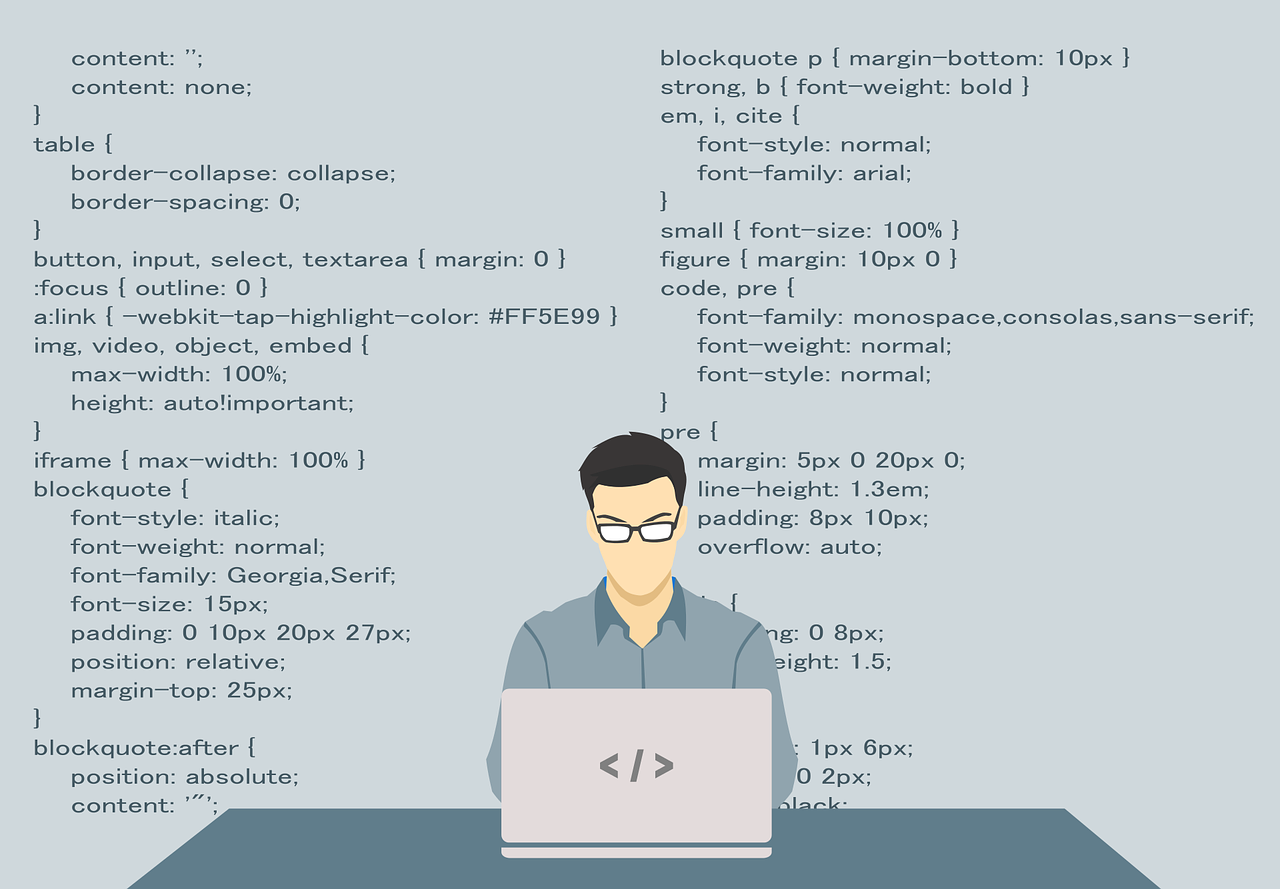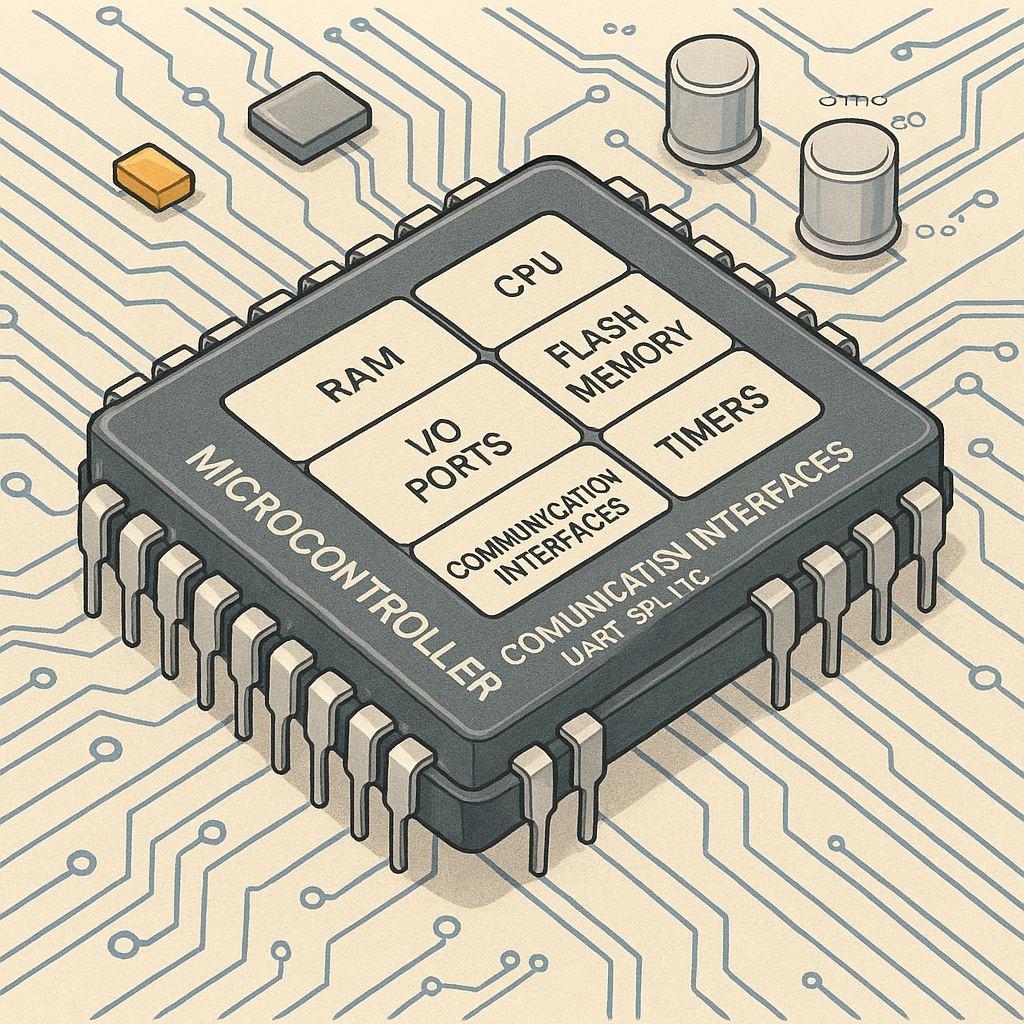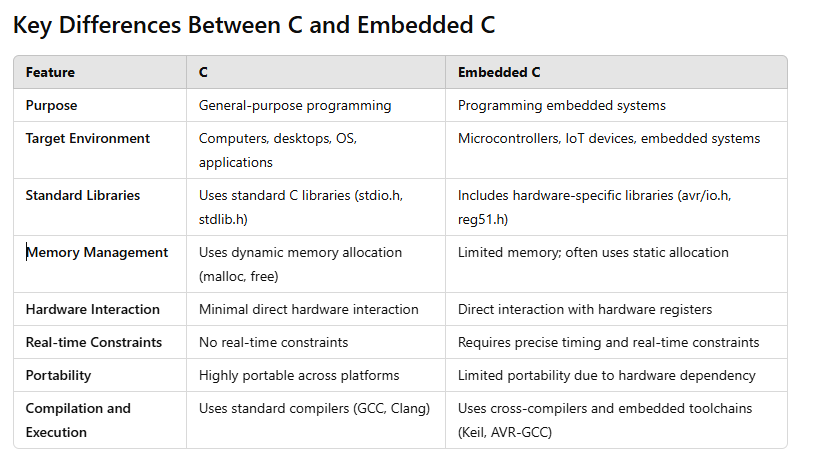Welcome to Yogin Savani

Free Courses
C language, Python, Embedded System, Artificial Intelligence, Machine learning, Deep Learning, Data Science,Automotive Engineering

Blog
Blogs on Interview Preparation, Creative Idea, Embeeded System, Artificial Intelligence, Machine learning, Data Science and Much more..
Testimonials
Your c tutorial videos are amazing. They really helped me a lot and I did crack 3 interviews after your course. I was actually interviewing for positions when I started your course .
Thanks a lot for everything yogin
I couldn’t not thank you enough.
Hopefully we will cross paths one day.
Kashyap Addanki
Software Engineer
Don't miss latest posts.
What Is a Microcontroller? (With Real-Life Examples in Simple Words)
A microcontroller (often abbreviated as MCU) is a compact integrated circuit designed to execute specific tasks within embedded systems. Unlike general-purpose computers, microcontrollers are optimized for control-based applications—processing input, executing code, and producing output in real time.
Types of Embedded Systems: Real-Time, Standalone, and Networked
Embedded systems power countless devices in our daily lives, from home appliances and cars to industrial machines and medical devices. These systems may look similar on the surface, but they come in different types, each designed for specific roles and functions. In this blog, we’ll take a closer look at three major types of embedded systems: Real-Time, Standalone, and Networked systems.
What Are Embedded Systems? A Simple Guide
What Are Embedded Systems? A Simple Guide. In today's digital world, technology is seamlessly woven into our daily lives. From your microwave and washing machine to your car and smartphone—many of the devices we use rely on something called embedded systems. But what exactly are embedded systems, and why are they so important?
In this guide, we’ll break down the concept of embedded systems in simple terms, explore where they’re used, and understand how they shape the modern world.
Memory Leaks in Embedded Systems
Memory management is a crucial aspect of embedded system development. Unlike general-purpose computers, embedded systems often operate with limited memory resources, making efficient memory utilization essential. A memory leak occurs when memory is allocated dynamically but not properly released, leading to gradual memory depletion and potential system failures over time. In this blog, we'll explore memory leaks in embedded systems, their causes, impact, detection methods, and best practices to prevent them.
Understanding RISC and CISC Architectures: A Deep Dive into Processor Design
In the world of computer architecture, two primary paradigms define processor design: RISC (Reduced Instruction Set Computing) and CISC (Complex Instruction Set Computing). These architectures influence how processors execute instructions and impact system performance, power efficiency, and overall computational capabilities. This blog will explore the fundamentals of RISC and CISC architectures, their advantages, disadvantages, differences, and real-world applications.
C vs Embedded C : Understanding the Key Differences
C vs Embedded C: Key Differences Explained
C is a powerful, general-purpose programming language used for system and application development, while Embedded C is an extension of C tailored for programming microcontrollers and embedded systems. Though they share syntax and structure, Embedded C incorporates hardware-specific libraries and real-time constraints. This blog explores their differences, similarities, use cases, and example codes to help you understand which language suits your project best. Whether you're working on software applications or embedded devices, mastering both C and Embedded C is essential for a successful career in tech. 🚀




